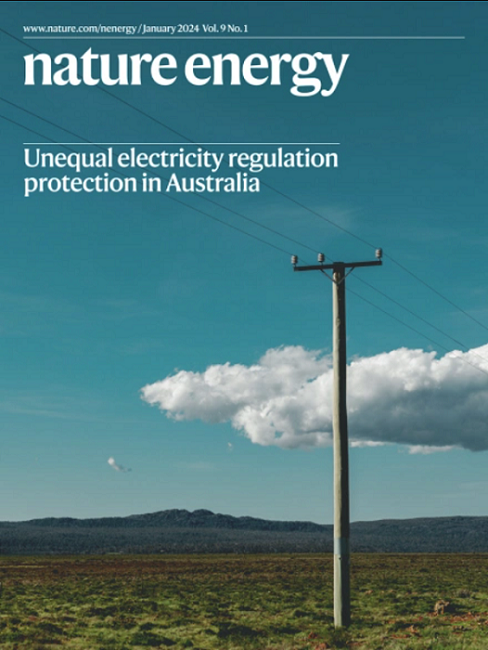Ambient pressure storage of high-density methane in nanoporous carbon coated with graphene
IF 60.1
1区 材料科学
Q1 ENERGY & FUELS
引用次数: 0
Abstract
Storage and transportation of methane (CH4) remains challenging as it cannot be liquefied at ambient temperature and instead must be stored as compressed gas at high pressures (approximately 25 MPa). Alternatively, it can be stored within nanoporous materials at moderate pressures (for example, 3.5 MPa) but this ‘adsorbed natural gas’ approach can suffer from substantial desorption with only minor temperature increases. Both methods therefore necessitate additional safety measures. Here we report graphene-coated porous carbon materials that can be charged with CH4 at high pressure and retain it at ambient pressure and temperature (below 318 K), thereby enhancing storage safety. Our data suggest that graphene serves as a thermally controllable lock that obstructs or activates pores to trap or release CH4, enabling a pressure-equivalent loading of 19.9 MPa at 298 K, and release upon heating to 473 K. The resulting reversible CH4 volumetric capacity reaches 142 v/v, exceeding that of various adsorbed natural gas materials at 3.5 MPa and 298 K when considering container space utilization. High-density methane storage typically requires high pressures and/or low temperatures, which can pose operational challenges. Here the authors report graphene-coated carbons that, after high-pressure charging, can store methane at high densities even at ambient external pressure.


石墨烯包覆纳米孔碳中高密度甲烷的环境压力储存
甲烷(CH4)的储存和运输仍然具有挑战性,因为它不能在环境温度下液化,而是必须在高压(约25 MPa)下以压缩气体的形式储存。或者,它可以在中等压力(例如3.5 MPa)下储存在纳米多孔材料中,但是这种“吸附天然气”的方法只需要轻微的温度升高就会遭受大量的解吸。因此,这两种方法都需要额外的安全措施。在这里,我们报道了石墨烯涂层的多孔碳材料,可以在高压下充电CH4,并在环境压力和温度(低于318 K)下保持CH4,从而提高了储存安全性。我们的数据表明,石墨烯作为一种热可控的锁,阻碍或激活孔隙以捕获或释放CH4,在298 K时实现19.9 MPa的压力等效负载,并在加热到473 K时释放。在考虑容器空间利用率的条件下,得到的可逆CH4容量达到142 v/v,超过了3.5 MPa和298 K条件下各种吸附天然气材料的可逆CH4容量。
本文章由计算机程序翻译,如有差异,请以英文原文为准。
求助全文
约1分钟内获得全文
求助全文
来源期刊

Nature Energy
Energy-Energy Engineering and Power Technology
CiteScore
75.10
自引率
1.10%
发文量
193
期刊介绍:
Nature Energy is a monthly, online-only journal committed to showcasing the most impactful research on energy, covering everything from its generation and distribution to the societal implications of energy technologies and policies.
With a focus on exploring all facets of the ongoing energy discourse, Nature Energy delves into topics such as energy generation, storage, distribution, management, and the societal impacts of energy technologies and policies. Emphasizing studies that push the boundaries of knowledge and contribute to the development of next-generation solutions, the journal serves as a platform for the exchange of ideas among stakeholders at the forefront of the energy sector.
Maintaining the hallmark standards of the Nature brand, Nature Energy boasts a dedicated team of professional editors, a rigorous peer-review process, meticulous copy-editing and production, rapid publication times, and editorial independence.
In addition to original research articles, Nature Energy also publishes a range of content types, including Comments, Perspectives, Reviews, News & Views, Features, and Correspondence, covering a diverse array of disciplines relevant to the field of energy.
 求助内容:
求助内容: 应助结果提醒方式:
应助结果提醒方式:


